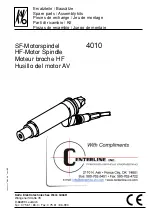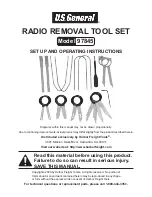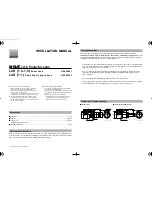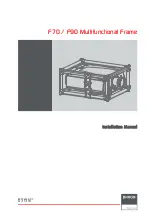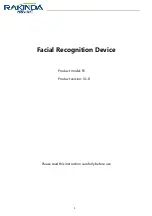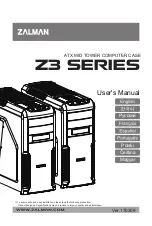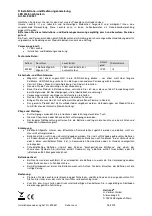
F3W-E
8
●
Wiring Precautions
Connection
•
Before turning ON the power, make sure that the supply
voltage is within the maximum allowable voltage range.
•
Be very careful not to get metal chips in the connector,
especially during wiring.
•
As a general rule, do not wire high-voltage lines or power
lines along with the lines of the F3W-E in the same conduit.
Otherwise, the F3W-E may be damaged or malfunction due
to inductive noise.
•
Use an extension cable with a cross-sectional area of
0.3 mm
2
min. and length of 100 m max.
•
Incorrect wiring may damage the equipment. Make sure
that the cable length and routing are appropriate to prevent
the connectors and cables from getting disconnected.
•
Applying excessive force to the mode selector switch may
result in damage. Do not apply a force of more than 5 N.
Cables
Make sure that the bending radius is 25 mm or more.
●
Installation Precautions
Installation
•
Install the Sensor so that its sensing face will not receive
light from the sun, fluorescent lamps, incandescent lamps,
and other light sources.
•
Do not strike the Sensor with a hammer or any other tool
during installation, otherwise the internal circuits of the
Sensor may be damaged.
•
Install the Emitter and Receiver in the same orientation as
shown in the following figure. (The cables must be in the
same direction.)
•
Use M4 screws to secure the Sensor body.
•
Secure the case to a tightening torque of 0.5 N·m or less.
Reflection from Wall or Floor
If the Emitter and Receiver are installed as shown in the
following illustration, all the axes may not be interrupted due
to light reflection from the floor or wall. Make sure that the
Emitter and Receiver detect the sensing object properly
before using the F3W-E in actual operation.
Side View
Top View
●
Adjustment
Operation and Stability Status Display
•
The following illustration shows the indicator status
corresponding to each incident level.
•
Install the Receiver so that the green stability indicators are
both ON in light receiving status.
Correct
Incorrect
Receiver
Emitter
Receiver
Emitter
Sensing object
Floor
Light
reflection
Wall
Receiver
Emitter
Receiver
Emitter
ON
Light-shielded area
Unstable light-receiving
area
Stable light-receiving
area
*
Operating
level
×
1.2
Operating
level
Stability indicator
(green)
Amount
of light
received
* If the Receiver is set to the stable light-receiving area, it will become more resistant
to environmental fluctuations such as temperature, voltage, dust, and setting
deviation after installation.
For applications where a stable light-receiving area is not obtained, attention must
be paid to environmental fluctuations.
Operation indicator (orange)
Light-ON
Dark-ON
OFF
OFF
OFF
ON
ON



















